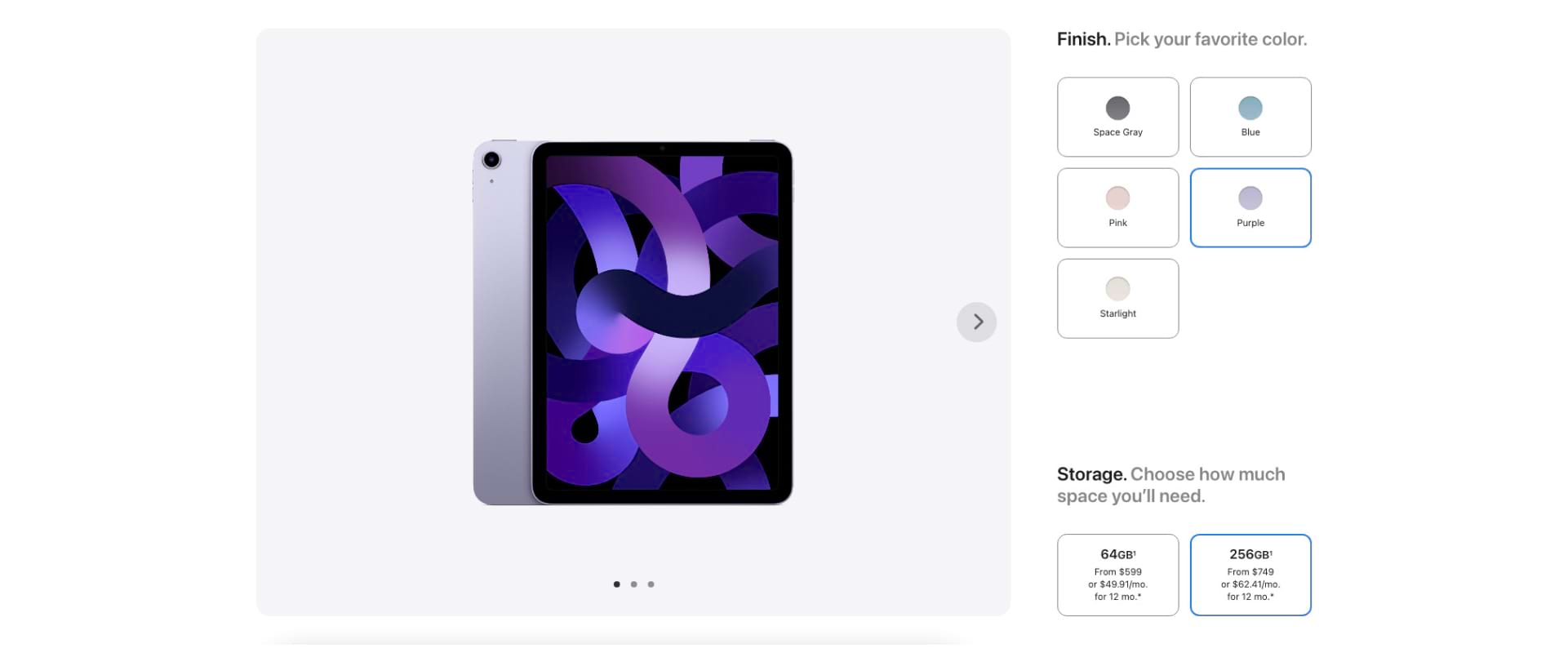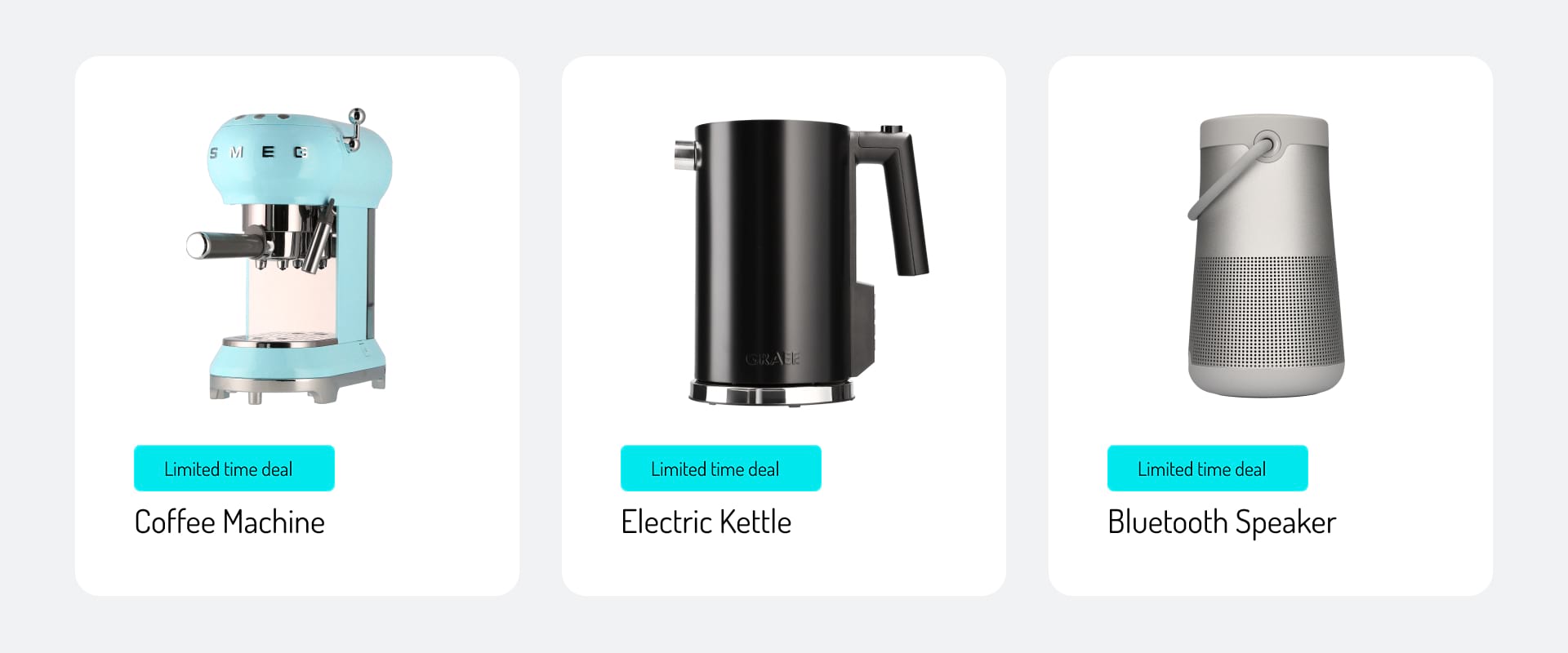The art of e-commerce upselling and cross-selling: drive revenue growth with smart product recommendations
The e-commerce sector is witnessing dynamic growth, revolutionizing how we shop and interact with brands. Yet, this phenomenon brings its own challenges to online store owners. The most significant is the inability to provide customers with a tangible product experience before purchase.
In traditional retail, the art of merchandising and the personal touch of in-store sales assistance are crucial in influencing customers’ buying decisions. So, how does it translate into e-commerce sales techniques? Smart product recommendations can ingeniously compensate for the lack of in-person advice and strategic product placement.
For e-commerce owners, understanding and implementing effective sales techniques, particularly cross-selling and upselling, is pivotal to providing a fulfilling customer experience and increasing revenue. But how to upsell and cross-sell efficiently? What differentiates these two approaches? How can you leverage upselling and cross-selling strategies at all customer journey stages to make more money? And importantly, how can you offer customers a personalized shopping experience that aligns with your business model and resonates with your target audience?
Our comprehensive guide looks into the nuances of upselling and cross-selling, providing insights and practical tips to boost your online store’s sales. Whether you’re looking to refine your e-commerce sales strategies or explore new ways to enhance customer engagement, this article should shed some light on this matter. If you are also wondering what solutions would fit your business model and target customers, this guide is for you! Let’s get started!
E-commerce Upselling vs. Cross-Selling. What is the difference?
While the two strategies may seem similar at first glance and are perfectly complementary, each technique serves a unique purpose and operates differently.
Cross-selling
Cross-selling is about offering customers related or complementary items that enhance the value of their initial purchase. A great example of cross-selling is when a customer adds an interactive toy to their cart, and the e-commerce store suggests completing the order with suitable batteries. An accessory necessary to use the product, yet not included with the toy.
Good cross-selling is not about inciting unnecessary consumption but anticipating and addressing potential needs and customer pain points. Therefore, cross-selling effectively increases sales, boosting the average order value and, in the long term, enhancing customer lifetime value. Furthermore, it also plays a crucial role in improving customer satisfaction by preventing potential disappointment and frustration, leading to positive reviews and setting ground for long-term customer loyalty.
McDonald’s has probably coined the most famous cross-selling phrase. ‘Would you like fries with that?’ offering a side complementary to a burger. Another great example of cross-selling can be seen in Amazon's approach. The e-commerce giant showcases products frequently bought together and offers discounts for purchasing the whole set.
Are you a fashion e-commerce store owner? Consider listing all the items featured in a lookbook photo with links to product pages, allowing customers to purchase a complete outfit without having to browse through the entire product catalog.

Upselling
Upselling, on the other hand, encourages customers to purchase a higher-priced item or an option at a higher price than their initial choice. It capitalizes on the customer’s expressed interest in a product category. For instance, following the burger metaphor, upselling would be akin to adding an extra slice of cheese or a second steak to the same burger.
Apple's online store is a prime example of efficient and smooth upselling. It excels in encouraging customers to upgrade the desired product by adding extra RAM or choosing a larger screen. A good upsell offers more value to the customer while resulting in improved profit margins for the business.

When incorporated correctly, upselling and cross-selling techniques can significantly enhance the customer’s shopping experience, saving time and simplifying the purchase decision process. They contribute to increasing sales and add more value to customer’s purchases, potentially turning first-time buyers into repeat customers. Both sales techniques compensate for the lack of in-person shopping assistance and make your customers feel cared for.

So what about downselling?
While upselling and cross-selling are geared towards increasing the average order value, there’s another strategy that plays a crucial role in customer retention and sales recovery: downselling. This sales technique involves offering a more affordable alternative to customers. It might initially seem counterintuitive, but it’s a strategic move to maintain customer engagement and sales momentum.
Let’s consider a scenario where you are a subscription-based services provider, and an existing customer decides to unsubscribe. This is where downselling can be particularly effective. You could offer them a discounted rate on their subscription for the next six months or a three-month, no-fee, automatically renewable account suspension. The rationale here is simple: if a customer can not afford a product they were initially interested in, presenting a less expensive option is a better alternative than losing the sale altogether.
Downselling is also useful for retargeting, especially in abandoned cart recovery. For instance, if a customer adds items to their cart but does not complete the checkout process, sending them an email or text message offering a time-limited discount on those items can incentivize them to finalize the purchase. This approach helps recover potentially lost sales and enhances the customer’s experience by providing options that better fit their budget. Also, by downselling, e-commerce stores show their existing customers they care about keeping them! It encourages customer retention and long-term engagement, recognizing that a smaller sale today can lead to more significant opportunities and loyalty in the future.
The Benefits of Upselling and Cross-selling
- Higher Average Order Value (AOV) - both techniques encourage customers to add more to their orders, thereby increasing the AOV. This metric is crucial as it directly impacts your bottom line.
- Revenue growth — when customers add items to their orders, your overall e-commerce revenues significantly boost. For instance, cross-selling alone generated over 35% of Amazon’s revenue, proving the potential of this strategy when applied correctly.
- Higher Customer Lifetime Value (CLV) — the probability of selling to an existing customer is 60-70% higher than acquiring a new one. Upselling and cross-selling turn new customers into repeat customers, enhancing your business's lifetime value.
- Increase of ROI — with an increase in AOV and CLV, the Return on Investment (ROI) improves, especially when compared to the costs associated with customer acquisition. The more a customer spends over time, the better the ROI for your business.
- Increase in Customer Awareness — personalized shopping experiences and tailored recommendations increase customer satisfaction and trust. When customers feel understood and catered to, it fosters a better customer experience, encouraging loyalty and repeat purchases.
Where to begin?
At what stage of the customer journey should you make an offer?
The sales funnel represents a customer's journey from first becoming aware of your product to purchasing and beyond. This journey is typically segmented into several stages, each offering unique opportunities for upselling and cross-selling.

- Pre-purchase — on product pages, before the customer adds a product to their cart. It is an opportune moment to introduce upsell offers or complementary products that enhance the primary item they are interested in, significantly increasing the average order value right from the start.
- During the Purchase — your audience is already committed to buying at this stage. Use it to your advantage! At the checkout page, you can include pop-ups with suggestions for additional products or special offers for product bundles. This technique boosts sales but also enhances the customer’s shopping experience by presenting them with options they may find valuable.
- Post-purchase — the customer journey does not end with a purchase. Post-purchase is a critical phase for building long-term customer loyalty. You can contact customers via email or text with personalized offers. Capitalize on knowing their preferences and interests. At this stage, you turn existing customers into repeat buyers. By analyzing previous purchases and customer preferences, you can tailor your cross-selling and upselling strategies to offer products your customers will likely be interested in. This way, you improve customer retention and ROI by keeping existing customers returning.
Efficient E-commerce Upselling and Cross-selling Strategies
Use Automation
Thanks to automated solutions, upselling and cross-selling are now more effortless than ever! E-commerce platforms such as Shopify offer several integrated applications. These e-commerce tools enable you to scale your upselling efforts. Here are a few examples of Shopify applications:
- Sender is an affordable upsell app that combines email and SMS marketing automation, allowing effective upselling campaigns. It includes an automation builder, a smart segmentation feature, and tools for capturing leads through popups and forms.
- ReConvert enables Shopify store owners to create custom post-purchase upsell funnels. Known for its friendly interface, this no-code funnel builder makes designing upsell funnels easy, thanks to pre-made templates and advanced smart segmentation.
- AfterSell (as the name implies) focuses on post-purchase upselling and down-selling. It is easy to use thanks to a drag-and-drop editor. AfterSell provides a seamless checkout experience by allowing customers to accept offers with just one click without re-entering payment information.
- Bundle Upsell (PickyStory) is an AI-driven, fully automated Shopify upsell app designed to offer bundles. It features a bundle builder for custom offers with automated discounts that auto-sync with the store’s inventory. Thanks to AI, the app proposes smart product recommendations, offering customers with a personalized shopping experience.
- OneClickUpsell offers pre- and post-purchase upsell options. The pre-sales upsells are displayed before the customer completes the checkout page.
These are only a few of our favorites. The options are endless!
Offer an Upgrade or a Subscription
Offering an upgrade or a subscription is an intuitive and highly effective upselling strategy. Capitalize on the fact that a customer has already shown interest in your product! Present customers with an advantageous upgrade option, such as a discount on the premium version of a product. This can be communicated through targeted emails or app notifications.
The key to a successful upsell offer lies in providing more value at a discounted price. Consider offering a lower price for customers who opt for a subscription model, coupled with perks like free shipping. This approach appeals to customers' desire for savings while setting up a foundation for long-term loyalty and significantly lowering customer acquisition costs. Imagine you are selling cat food or health supplements. You create a win-win situation by offering a monthly subscription at a lower price. You can keep good profit margins even at a discounted rate, as the subscription model significantly reduces customer acquisition costs. Plus, the recurring nature of this type of transaction ensures a steady revenue stream for your business while providing customers with a hassle-free, continuous supply of a product they need, reinforcing customer retention.

Show Related or Complementary Products
Selecting and suggesting relevant products is the secret to successfully upselling and cross-selling. As mentioned above, Amazon is a prime example of leveraging social proof to encourage shopping in bundles. Here are other examples that you may find inspiring:
- You may offer a helmet or a pump if you sell a bike.
- Propose complementary filters to customers buying a filtering bottle.
- If you are a fashion brand owner, suggest items together to create a total look.
- For smartphones, you can offer a protective case and extended warranty.
Sets and Lots
Bundle related items or offer a third product for free! This approach enhances the perceived value of the offer and encourages larger purchases. For instance, offer a skincare set to a customer buying a moisturizer or a kit of different tools to a customer looking for a screwdriver. People perceive sets as better deals, especially regarding convenience products.

Communicate the Value
To successfully persuade the customer, communicate the added value to their initial choice. Highlight the extra features of the premium version of the product. Illustrate how a complementary product works with the original purchase, promising a better overall user experience. Clear communication can make or break the deal. It also contributes to customer’s trust.

Upsell and Cross-sell through Customer Service
Encourage your customer service to step up! For instance, they can suggest complementary items or upgrades while responding to a product review. They can persuade customers to consider an exchange when handling refund requests. Including smart recommendations in the e-mail footer can be another subtle yet effective tip. Your e-commerce store’s live chat allows real-time interaction with new customers. Tailored suggestions can be made based on the conversation.

Nurture customer experience post-purchase by leveraging information about their preferences. This data can be used to place retargeting ads that target existing customers, offering them discounts on upgrades of the product they’d bought or other items they’d shown interest in. This can be done via e-mail, text messages, or push notifications!
Use Scarcity and Urgency to Drive Conversions
Add a sense of urgency to your offer by letting the customer know how many items are left in stock or by setting up a time limit to the offer. Refrain from overflowing your customers with different options. Studies show that narrowing them down can boost revenues by 5-40% and cut costs by 10-30%. In practice, this means curating product selections and offers to emphasize their exclusivity and prompt customers to make quicker decisions.

Use Visual Content
Studies show that 65% of people are visual learners. Images are often the first element that captures customers’ attention, making them crucial in e-commerce strategies, such as cross-selling and upselling. Good product photography should showcase and sell your products. High-quality, visually appealing images contribute to your brand’s visual identity and significantly influence customer satisfaction.
Thanks to photo automation, product photography has become easier than ever. You can now achieve high-quality, repeatable product photos in-house with minimal training. And this is where Orbitvu’s automated solutions shine.

Orbitvu offers meticulously designed equipment that will enable you to streamline your product production without compromising on the photo quality. Our range includes automated photo studios with integrated software that allows you to edit, organize, and publish your images straight to the e-commerce platform of your choice. This solution significantly simplifies and shortens the process from shooting to the website.

Test it!
Marketing is all about learning and optimizing! Being open to feedback is crucial. Track customer behavior, searching for patterns. E-commerce managers must actively monitor campaign results and analyze conversion metrics to understand which strategies work and which might need improvement. Keep in mind that all the valuable data is not only a measure of past performance but a guide to future strategy.

Final Thoughts
As you can see, mastering the art of upselling and cross-selling can help you boost revenues and enhance customer satisfaction. By strategically implementing these techniques, you can significantly increase the average order value and lower customer acquisition costs, leading to a higher return on investment. Thanks to the automated solutions offered by most e-commerce platforms, store owners can provide their customers with personalized shopping recommendations, strengthening customer loyalty. Automation can also help you with producing consistent, high-quality visual content in-house. To learn more about automated photography solutions, visit our Knowledge Hub or contact our team.
Articles you may also like

This end-of-the-year release brings new features and improvements that enhance and expand the user experience with the Orbitv...

In this era of marketing, the role of product photography is indispensable. Whether it's capturing the fine details of jewelr...

AI technology in product photography is reshaping the industry with speed, creativity, and new capabilities. With so much to ...







